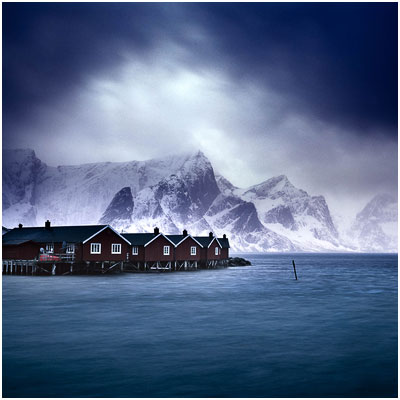Is it 'carry-on', or a carry on? ;-) I'm leaving for Norway in a short while, heading to Oslo, then up into the Arctic circle to start two photographic trips in the Lofoten Islands.
I was thinking a few days ago, how my ThinkTank Airport International (a superb bag) has become almost useless overnight now, because the airlines are defaulting to carry on weight restrictions of around 7kg (which is pretty useless for most things). So I packed up different alternatives and tried them out at home to see what the weight was like.
Firstly, I'm pleased to say that Norwegian Airlines have a carry on policy of 10kg, with an additional 'personal item', which really usually means a small packpack or laptop case :-) The upshot is that I've been able to pack my entire Mamiya 7II outfit (four lenses plus a spare body), and film and filters and a cuddly toy too, and keep the ThinkTank TakeOff bag I also own, to under 10KG. So it is 'all go' as far as I'm concerned. I really hate using backpacks - I get sore shoulders and when you're moving around airports, it just becomes added stress because of the reduced comfort. I much prefer to travel with a roller bag, and the ThinkTank's are extremely robust and durable. The gear can get thrown about by taxi drivers, or thrown about whilst moving around places with no impact to my gear.
But lets consider if the weight restriction was indeed 7kg......
I weighed the Mamya 7II outfit, and had to reduce it down to 1 body, and I also had to go to a backpack bag - a LowePro Vertex 200 bag. I managed to get the entire thing down to 7kg, but it meant I would have to stick the spare Mamiya 7II body into my coat pocket (it's compact enough to do that). The bag has enough space for a laptop, but this would tip the weight of the system over the 7kg limit......
In short, if you travel with a laptop, and a reasonable SLR system that includes the usual 24-70 and 70-200 f2.8 type of lenses, I'd guess that you would easily go over the 7kg limit every time.
So what to do?
Well, maybe it's time that we started looking at the specifications of the gear we use - one thing we never really consider is the weight of the camera gear itself. I've seen a lot of gear over the past few years, and some of it is like carrying a small, dense brick around with you: consider the Pro level bodies out there by Canon and Nikon. And the pro series lenses too - they're not light!
I bring this up to wonder, why do Pro systems have to be 'big' and 'heavy'? Is it to make the consumer feel he's bought something more substantial? Shouldn't pro systems be like pro racing bikes? Lighter than their consumer versions?
This might come down to an argument about durability. Some people feel more secure with all the weather-sealing and magnesium bodies out there, but I've never seen an SLR system fail on any of my workshops due to rain (and we get a lot of it here in Scotland).
I would argue that if you want to travel on planes, start considering the weight aspect of the gear you're intending on purchasing. Opt for a more consumer version of the body than those bricks that the camera manufacturers sell at their top end. Go for a body that is less durable, but lighter. The same should also apply to lenses.
Maybe this is something that can be put forward to camera manufacturers in future: we need lighter gear.
If you're thinking of flying a lot, then maybe you need to work on a 'flight-system', one that you know will not upset any air lines when you do go for a wander.
I also think it is worth considering other systems, rather than the usual stock SLR systems we've been using for some time now. I think systems like Sony's Nex 7 and the Panasonic / Olympus Micro-four-thirds (I'm a fan of this system) are terrifically light and compact. Of course this only applies to digital shooters. For the film shooters, maybe we need to go back to the drawing board and think of buying lighter medium format systems. Some of the 645 options out there are lighters (the exception being the Contax 645 - I have one, and the body and lenses are very heavy). My Mamiya 7II system is extremely light and compact for it being a 6x7 camera.
And one last word: less is more. Often I feel we take far too much gear with us. We take what we don't need, or seldom use. Free up your decision making by taking a more reduced set of lenses. We will never be able to catch everything, and taking all focal lengths 'just in case', is folly in my opinion. The more stuff you have, the more decisions you have to make, the more delay you have in capturing what you see. Learn to use two lenses instead of trying to master four.

